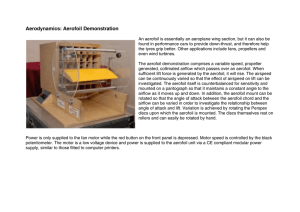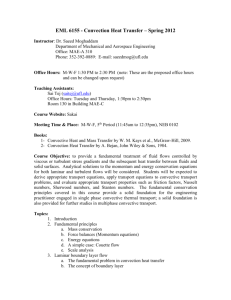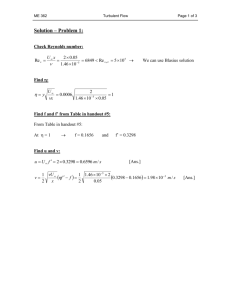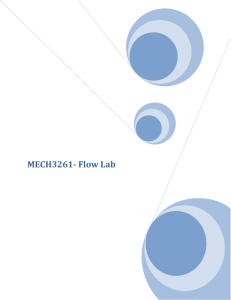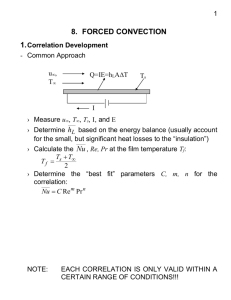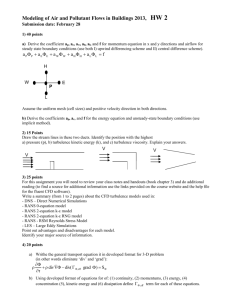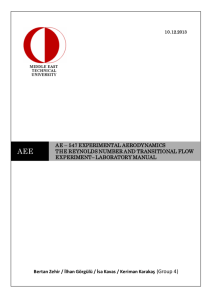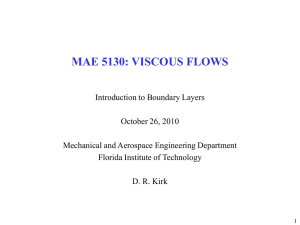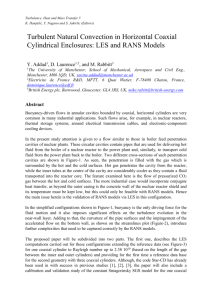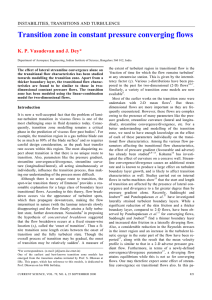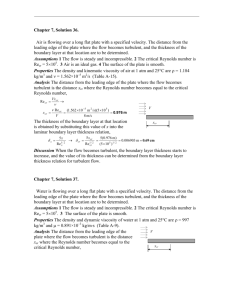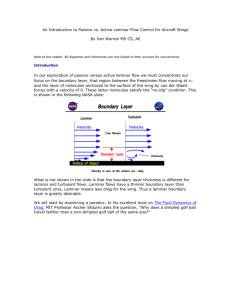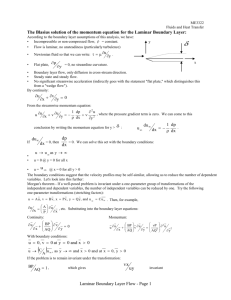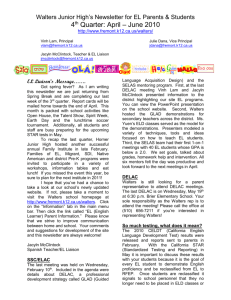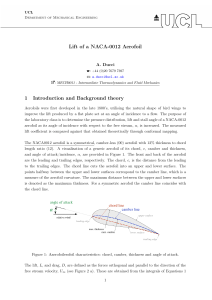PG10Poster-performance_of_two_kt
advertisement
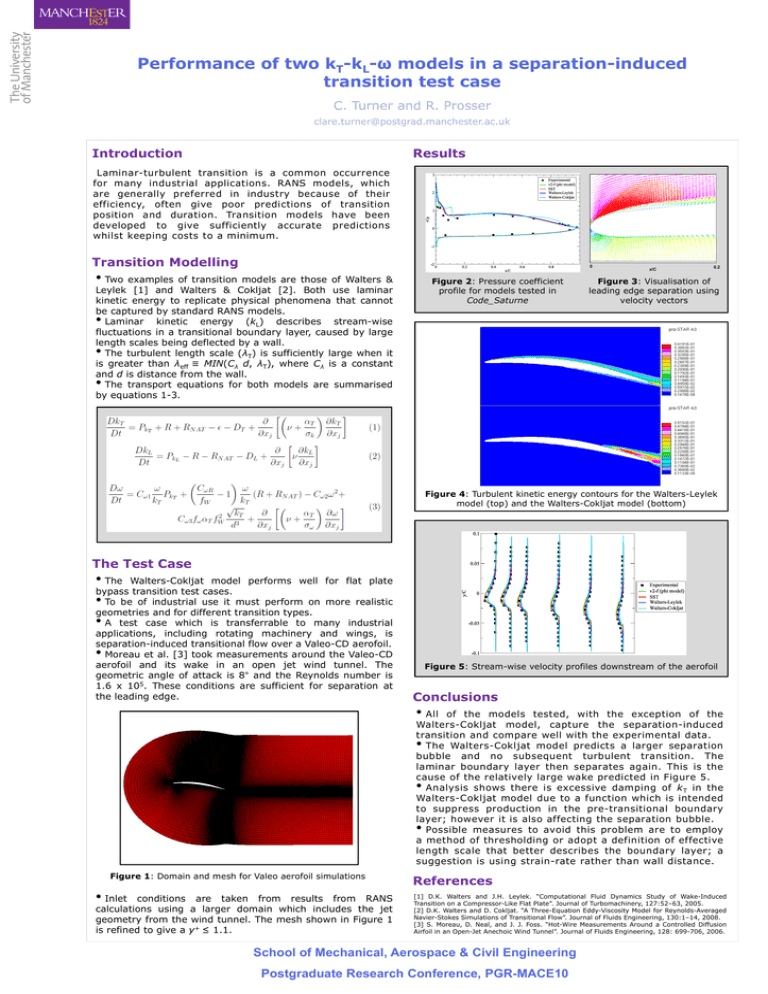
Performance of two kT-kL-ω models in a separation-induced transition test case C. Turner and R. Prosser clare.turner@postgrad.manchester.ac.uk Introduction Results Laminar-turbulent transition is a common occurrence for many industrial applications. RANS models, which are generally preferred in industry because of their efficiency, often give poor predictions of transition position and duration. Transition models have been developed to give sufficiently accurate predictions whilst keeping costs to a minimum. Transition Modelling 0 • Two examples of transition models are those of Walters & Figure 2: Pressure coefficient profile for models tested in Code_Saturne Leylek [1] and Walters & Cokljat [2]. Both use laminar kinetic energy to replicate physical phenomena that cannot be captured by standard RANS models. Laminar kinetic energy (kL) describes stream-wise fluctuations in a transitional boundary layer, caused by large length scales being deflected by a wall. The turbulent length scale (λT) is sufficiently large when it is greater than λeff ≡ MIN(Cλ d, λT), where Cλ is a constant and d is distance from the wall. The transport equations for both models are summarised by equations 1-3. x/C 0.2 Figure 3: Visualisation of leading edge separation using velocity vectors • • • Figure 4: Turbulent kinetic energy contours for the Walters-Leylek model (top) and the Walters-Cokljat model (bottom) The Test Case • The Walters-Cokljat model performs well for flat plate bypass transition test cases. • To be of industrial use it must perform on more realistic geometries and for different transition types. • A test case which is transferrable to many industrial applications, including rotating machinery and wings, is separation-induced transitional flow over a Valeo-CD aerofoil. Moreau et al. [3] took measurements around the Valeo-CD aerofoil and its wake in an open jet wind tunnel. The geometric angle of attack is 8° and the Reynolds number is 1.6 x 105. These conditions are sufficient for separation at the leading edge. • Figure 5: Stream-wise velocity profiles downstream of the aerofoil Conclusions • All of the models tested, with the exception of the Walters-Cokljat model, capture the separation-induced transition and compare well with the experimental data. The Walters-Cokljat model predicts a larger separation bubble and no subsequent turbulent transition. The laminar boundary layer then separates again. This is the cause of the relatively large wake predicted in Figure 5. Analysis shows there is excessive damping of k T in the Walters-Cokljat model due to a function which is intended to suppress production in the pre-transitional boundary layer; however it is also affecting the separation bubble. Possible measures to avoid this problem are to employ a method of thresholding or adopt a definition of effective length scale that better describes the boundary layer; a suggestion is using strain-rate rather than wall distance. • • • Figure 1: Domain and mesh for Valeo aerofoil simulations • Inlet conditions are taken from results from RANS calculations using a larger domain which includes the jet geometry from the wind tunnel. The mesh shown in Figure 1 is refined to give a y+ ≤ 1.1. References [1] D.K. Walters and J.H. Leylek. “Computational Fluid Dynamics Study of Wake-Induced Transition on a Compressor-Like Flat Plate”. Journal of Turbomachinery, 127:52–63, 2005. [2] D.K. Walters and D. Cokljat. “A Three-Equation Eddy-Viscosity Model for Reynolds-Averaged Navier-Stokes Simulations of Transitional Flow”. Journal of Fluids Engineering, 130:1–14, 2008. [3] S. Moreau, D. Neal, and J. J. Foss. “Hot-Wire Measurements Around a Controlled Diffusion Airfoil in an Open-Jet Anechoic Wind Tunnel”. Journal of Fluids Engineering, 128: 699-706, 2006. School of Mechanical, Aerospace & Civil Engineering Postgraduate Research Conference, PGR-MACE10



